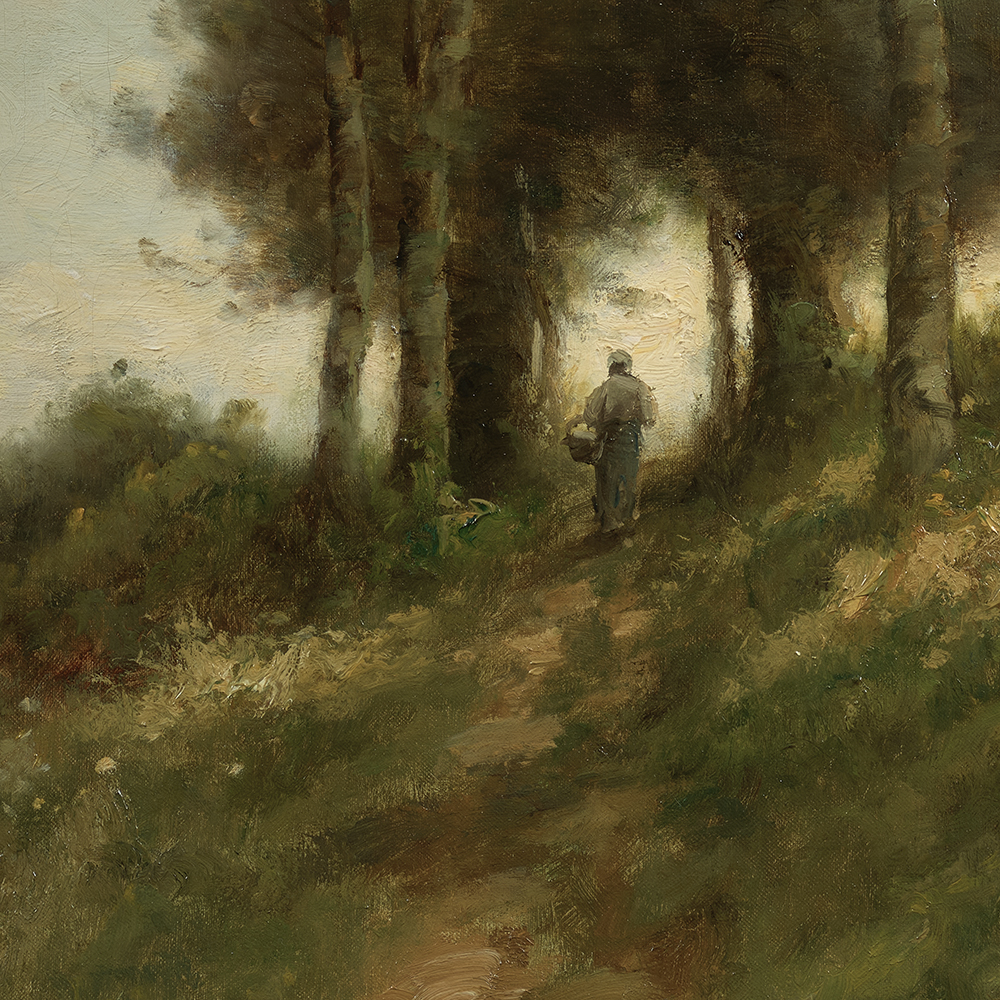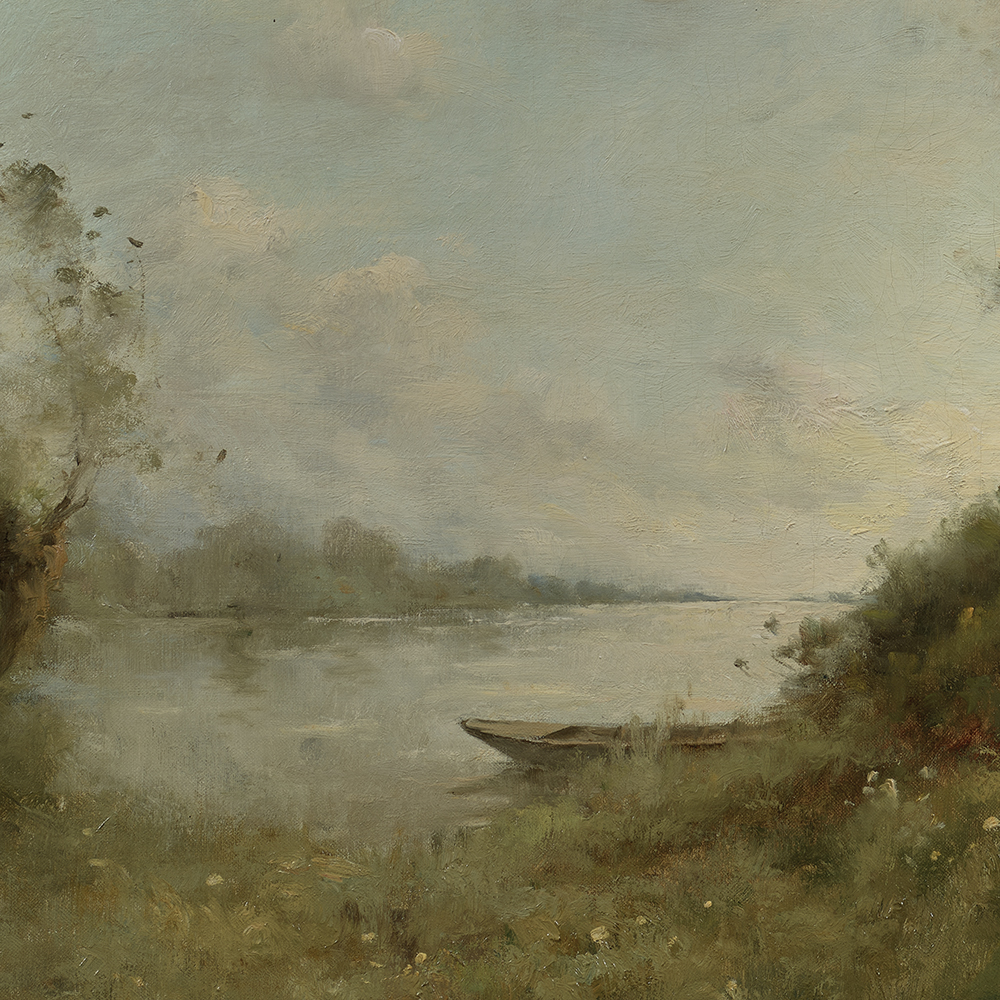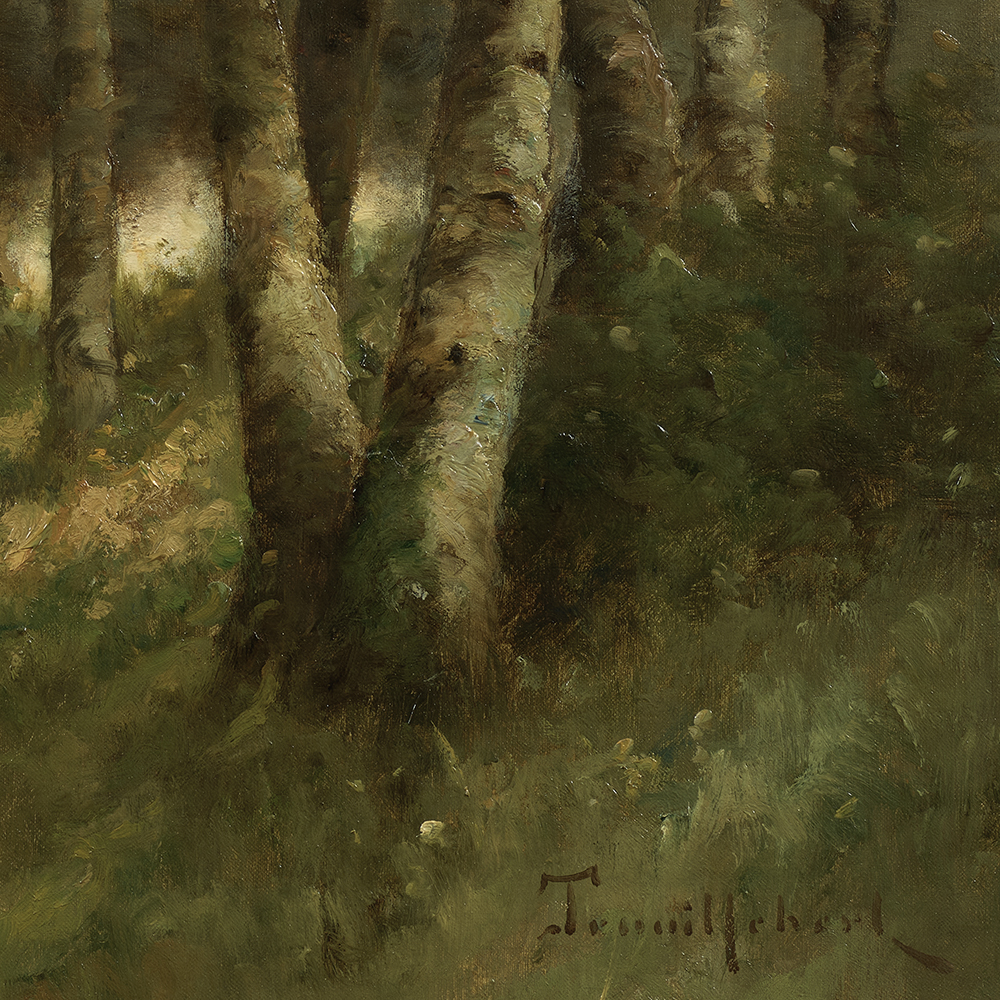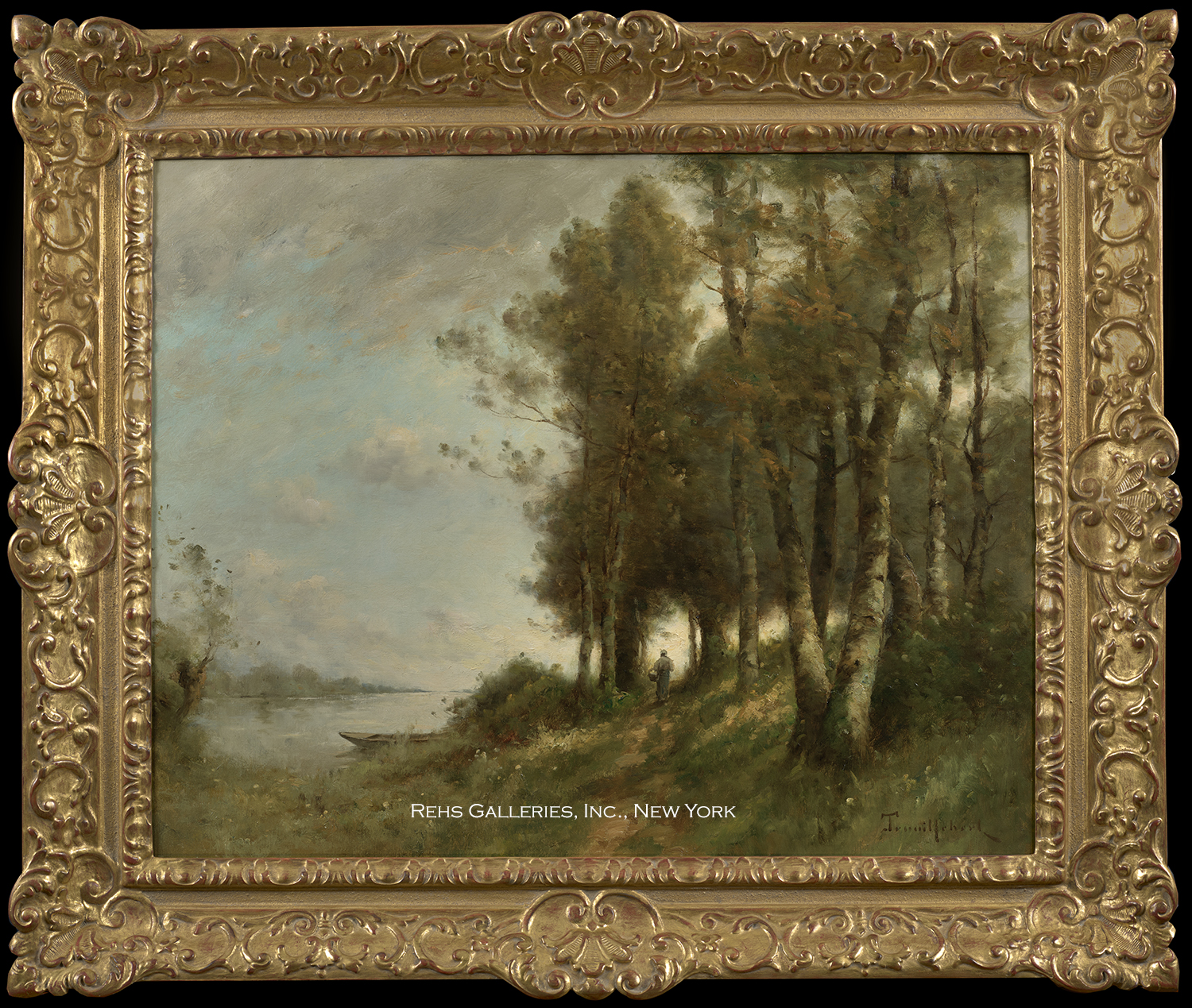Paul Désiré Trouillebert
(1829 - 1900)
Peasant Woman by the Water's Edge
Oil on canvas
25.625 x 32 inches
Framed dimensions:
34.5 x 40.25 inches
Signed
BIOGRAPHY - Paul Désiré Trouillebert (1829 - 1900)

Some artists become defined by their association with another artist, bringing forth both positive and negative implications. Such was the case of Paul-Désiré Trouillebert, whose works bore such a striking resemblance to those of his predecessor, Jean-Baptiste-Camille Corot that the great writer, Alexandre Dumas, purchased what he believed to be a painting by Corot which was actually a Trouillebert bearing a forged Corot signature. A cynical critic wrote in The Century of 1892 that, “Imitation can go but a little way, and is always without value, although its appearance is no argument against the art imitated - witness M. Trouillebert.” Despite such harsh criticism, Trouillebert was not only interested in depicting landscapes similar to those of the Barbizon school, but also showed an interest in genre scenes and portraits, exhibiting several times at the Salon from 1865 to 1884.
Paul-Désiré Trouillebert was born in Paris in 1829, although his specific birth date is unknown. Early in his career he experimented with genre scenes and portraits, remaining faithful to the latter as the majority of his Salon entries throughout his career were of this type. He began studying under Auguste-Antoine Ernest Hébert, an artist working primarily in drawing and diverse in his subject matter ranging from portraits, to mythology, to the Roman countryside.
Trouillebert debuted at the Salon of 1865 with Portrait de Mlle A… (Portrait of Miss A…). While portraits certainly did not guarantee acceptance into the Salon, they did, for the most part, offer a rather safe and incontestable first entry to a Salon since it was a subject that did not challenge traditions and did not challenge Salon audiences and jurors. At every Salon from 1865 to 1872 Trouillebert exhibited at least one portrait, despite his interests, which were beginning to shift to landscape painting.
While concentrating on portraiture for the Salon entries, Trouillebert became aware of Corot’s work and took an exceptional interest in it, immersing himself in landscape painting and working en plein-air, therefore also associating himself with traditions of the Barbizon school. On the other hand, Trouillebert was also trying new methods of representation by using sketchily and loosely painted landscapes, while other works concentrated on effects of light and rain and the treatment of riverscapes, prefiguring the Impressionist movement of the later decades. Trouillebert exhibited his first landscape in 1869: Au Bois Rossignolet (The Rossignolet Woods). It was also around 1869 that he began studying under Charles-Francois Jalabert, in addition to Hébert.
With Trouillebert’s similarity to Corot and his treatment of a subject akin to the Barbizon artists, his name was often lost in the category of landscape painting. Henri Loyrette (“Acquisitions”, Revue du Louvre, Vol 42 (October 1992), pg. 71) wrote that :
Trouillebert is mostly known for his landscapes in the manner of Corot, that he repeated countless times during his entire life. These works make one forget that this student of Hébert could be an original painter as proven by L’Orientale; some landscapes of the Normandy coast, or even this Parisian composition of Les Travaux du Relèvement du Chemin de Fer de Ceinture - le pont de la rue de la voute cours de Vincennes (Construction of the Elevated Railway).
Unfortunately, Trouillebert’s name became most famous after Alexandre Dumas purchased a Trouillebert painting that was signed as a Corot. Forgery of Corot’s work was rampant, especially in America where it was once said that Corot painted about a thousand works, two thousand of which are in America. Whether or not Trouillebert meant to intentionally paint in the style of Corot or if it was just a matter of over-inspiration is another question. A lawsuit ensued, bring much attention to Trouillebert and bringing him a small moment of fame to his career.
Trouillebert also worked with the nude, his most well received composition being Les Baigneuses (The Bathers) of the 1882 Salon. He continued exhibiting at the Salon until 1884, when he showed his last work, La Gardeuse d’Oies (The Geese Keeper). Trouillebert died on Jun 28, 1900 in Paris.
“…Trouillebert has a place in nineteenth-century French art, albeit in Corot’s reflected glory.” (Adrian Bury, “In the Galleries”, Connoisseur, Vol. 161 (1966) pg. 256) Paul-Désiré Trouillebert, despite being overwhelmingly compared to Corot, continued the traditions of the Barbizon school while showing aspects of his work that would later establish the Impressionist movement. His consistent participation at the Salon shows that while his main interest during the latter period of his career seemed to move towards landscape painting, he remained a diverse painter, focusing also on portraits, the nude, and mythology. Thus, Trouillebert should be considered more than another landscape artist mimicking the style of Corot.
In conclusion, it was written that: The greatest merit of Trouillebert is to be a complete painter; he never confined himself to a genre: he was also just as skillful at bringing to life the flesh of a women as painting bright and hazy landscapes, of the banks of the Loire or the Oise with the soft aspects of the trees, of spring mornings, of portraits or of still lifes of a true realism. His oeuvre which was considerable, conserves a tonality that is its own, an incontestable originality and a strong personality which differentiates it from Corot…and which assures him one of the greatest places, even if it isn’t the first among the contemporary landscape painters.
-Édouard-Joseph, Dictionnaire Biographique des Artistes Contemporains: 1910-1930 (Paris: Libraire Grund, 1934, pg. 353-354)
Museums:
Cleveland Museum of Art, Cleveland, OH
Hermitage Museum, St. Petersburg, Russia
Metropolitan Museum of Art, New York
Musée d'Orsay, Paris
Musée des Beaux-Arts de Nice, Nice, France
Museo Nacional de Bellas Arte, Buenos Aires
National Gallery of Armenia, Yerevan, Armenia
Norton Simon Museum, Pasadena, CA
The Walters Art Museum, Baltimore, MD





